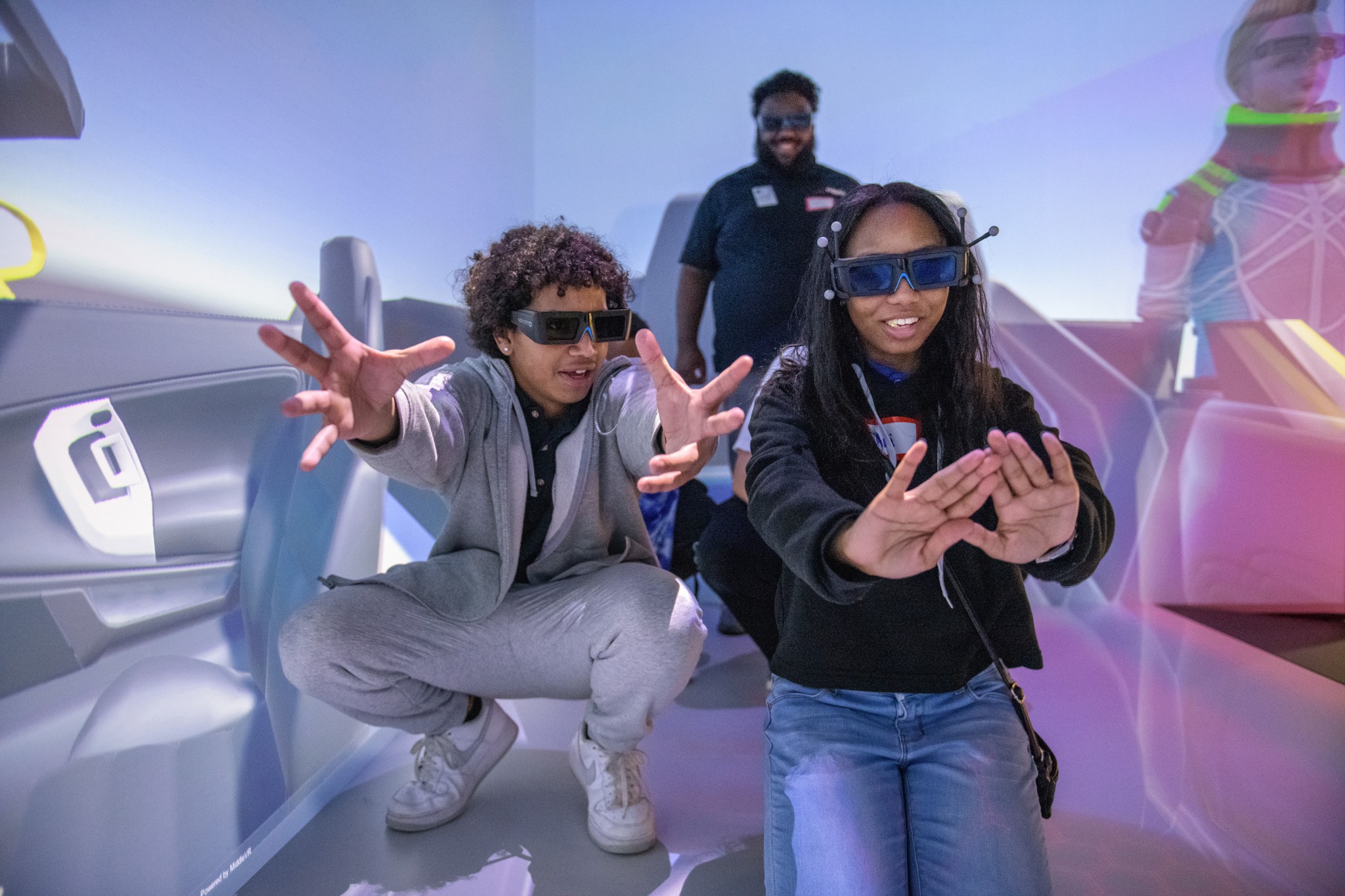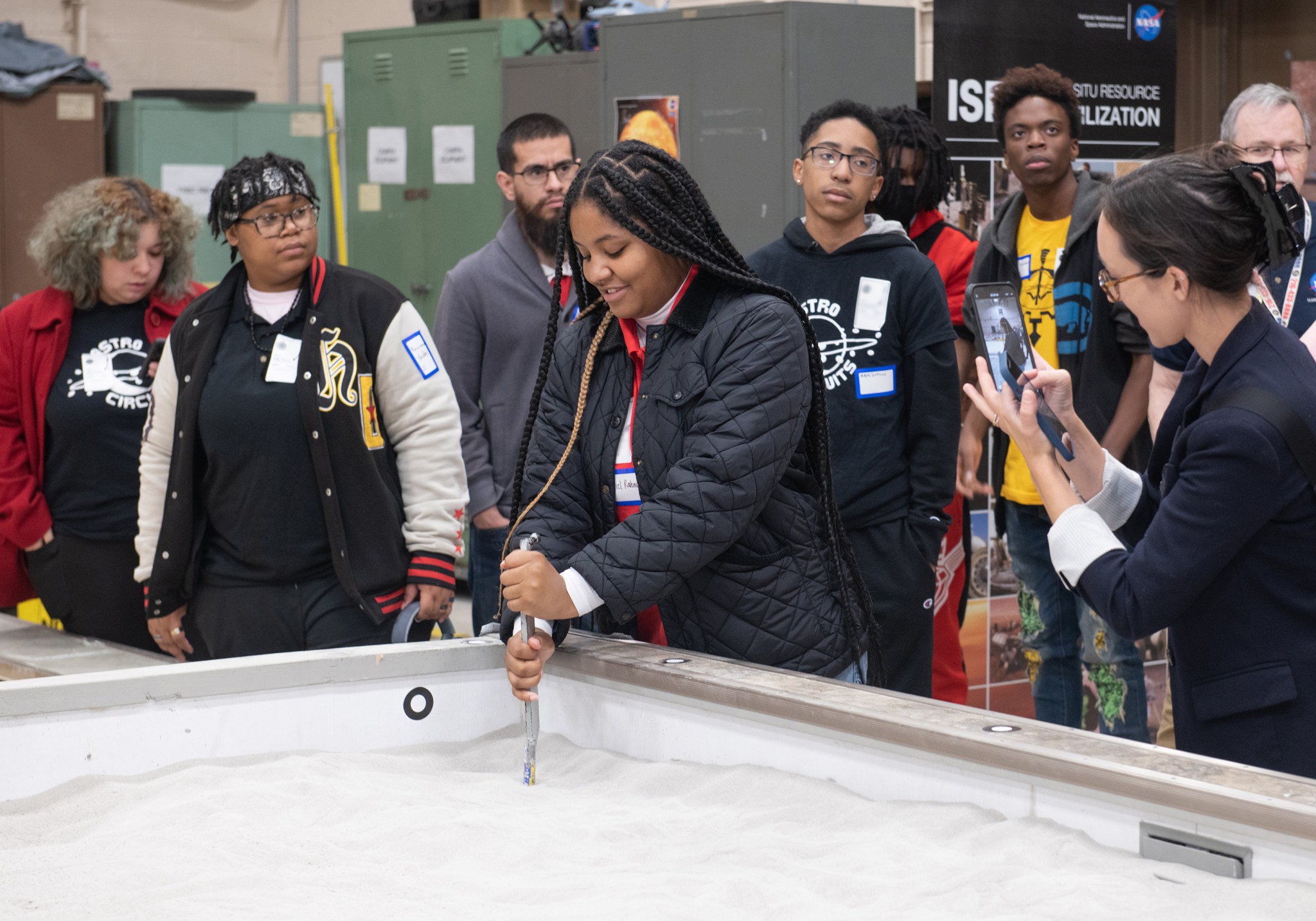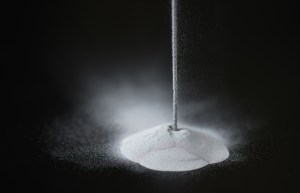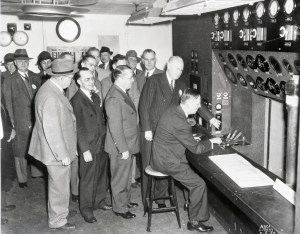More than 50 high school students jumped at the chance to become NASA engineers and scientists for a day. NASA’s Glenn Research Center in Cleveland welcomed four FIRST Robotics teams onsite to tour state-of-the-art facilities, explore the latest technology, and learn about internships and career opportunities.
Through center tours, Cleveland Metropolitan School District students saw how the robotics concepts they use in the FIRST program apply in the real world. Each year, these FIRST Robotics teams — sponsored by Great Lake Science Center — spend six-weeks designing, programming, and building a robot that will ultimately compete in the FIRST Robotics Competition, a nationwide head-to-head challenge.
“Events like this help the public, especially students, understand that Glenn employees are human too; we were once students in their shoes”
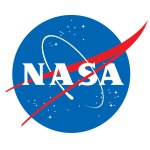
Jeresha Nixon
Education Program Specialist, NASA's Glenn Research Center
“Events like this help the public, especially students, understand that Glenn employees are human too; we were once students in their shoes,” said Jeresha Nixon, education program specialist at Glenn. “The conversations between students, interns, and NASA professionals motivate and help kids choose a career path because such opportunities allow them to ask questions, gain knowledge, and receive specific advice for their career path of interest.”
At NASA Glenn, students from John Davis Aerospace and Maritime High School, East Technical High School, John Marshall School of Information Technology, and MC ² STEM High School toured the Simulated Lunar Operations (SLOPE) Laboratory and Graphics and Visualization (GVIS) Laboratory and participated in a STEM challenge to build a truss from straws.
In the SLOPE Lab — an indoor facility designed to mimic lunar and planetary surface operations — students learned how NASA Glenn researchers test tools and techniques needed for rovers to traverse long distances and explore surfaces of the Moon and Mars.
In the GVIS Lab, students used the latest augmented and virtual reality technology to see the X-59 supersonic aircraft up-close, step inside a virtual spacesuit, and explore Mars and Titan.
NASA Glenn invests in building a future diverse STEM workforce that includes traditionally underrepresented students, such as young girls and women, minorities, students with disabilities, and other underserved individuals.
“NASA Glenn’s Office of STEM Engagement (OSTEM) has really been going out into the community and making connections and collaborations with parents, teachers, libraries, and other youth-serving organizations,” said Nixon. “We want people to take advantage of the free resources we offer, and the only way they can do that is if we create opportunities accessible to them.”
In the past year, OSTEM supported more than 25 events for students from kindergarten to higher education. Along with coordinating events, the office supports several Greater Cleveland mentoring and tutoring programs. OSTEM connects the Cleveland Metropolitan School District with NASA Glenn employees who volunteer to be tutors or mentors to students.
“What makes NASA Glenn unique is many of our employees started their NASA journey attending a NASA event or program, gaining an internship, and eventually becoming a NASA employee,” said Nixon. “So, when we communicate to students that they are the explorers of the next generation, we really mean it!”
Jacqueline Minerd
NASA’s Glenn Research Center


























